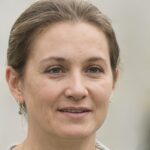At much lower elevations, solutions exist for trout in this warming world, even if they require effort, creativity, and some cash. They’d heard about a few such lakes high in the Wind River Range, a pile of jagged granite slicing northwest to southeast across Wyoming’s middle. The Winds are packed with peaks over 12,000 feet and have the largest contiguous glacial complex in the lower 48.
Our families have fished together since then, and we’ve watched our daughters learn to wet their hands before touching a fish and eventually figure out how to cast themselves. Seven miles and 1,500 feet later, we pop out of the Boulder Canyon Trail, wondering if herding children, dogs, and four affable but occasionally impatient llamas into such country was really a good idea. But then we see Lake Ethel, a glacial relic nestled among granite boulders lined with bug-producing grass and lush willows. The aggressive-acting invasive crayfish sparked investigation into multi-state crayfish scandal. If a population of fish is at risk for any reason, Diekema said, hatcheries are a genetic repository. Use this form if you have come across a typo, inaccuracy or would like to send an edit request for the content on this page.
However, in the early 1900s, this picturesque body of water nestled between the towering peaks of Fusillade, Jackson, and Gunsight Mountains was artificially stocked with rainbow trout to improve recreational fishing opportunities. Since then, according to the scoping document, or the proposed plan, released by the NPS, the rainbow trout established a self-sustaining population in the lake. Through hybridization, i.e. the mixing of gene pools, they threaten the existence of native cutthroat trout within the same Saint Mary’s waterways . In order to help establish their population, the park is proposing to apply the fish toxicant via an inflatable boat and backpack sprayers with helicopters transporting materials. Once the non-native fish are eradicated, the park would then translocate (i.e. stock) the river with the cutthroat trout.
An additional 80,000 trout are stocked for the spring season which begins each April. In smaller streams, this could be enough to cool the water down during the day. (Some warming occurs at night because that underground “sponge” remains a constant temperature.) In larger rivers, it could be enough to create pockets of cool water where fish seek a daytime refuge. The phenomenon occurs naturally in rivers and streams, but is gone in many places because of soil erosion and channelization.
Between 1997 and 2019, the Aqualande group conducted a selective breeding program on 10 generations of rainbow trout, based on the principles established by INRAE and the SYSAAF. Glacial lakes are often isolated from nonnative species, making them the perfect haven for native species like cutthroat trout. Christine PetersonWe know some of the solutions, even ones that don’t require airlifting beavers into wilderness areas. Bring a thermometer if you don’t know how to gauge water temperatures.
The results show that trout from the selective breeding program needed 17% to 20% less feed than the unselected trout to achieve the same growth. Moreover, their filets had a higher lipid content, which improves their nutritional and taste profiles. Adding microalgae to the sustainable feed also enhanced the nutritional quality of the filets, which contained just as many Omega-3 long-chain fatty acids as filets from trout given the standard feed containing fish oil. The fish fed this “future” feed, which has similar nutritional characteristics, achieved similar growth performance.
For 110 days, trout from both groups were given this feed, while others were fed a standard commercial feed containing fishmeal and fish oil. The world’s oceans can no longer sustain the ever-rising demand for fish. Aquaculture offers an alternative approach – if production is sustainable and high quality. They compared the growth and nutrition needs of trout from this programme with those of an unselected trout population. Their findings, published in Aquaculture Reports, show that selected trout need 17% to 20% less feed to achieve the same growth as the unselected ones. As a result, the environmental impacts of fish farming can be reduced.
The author’s husband hooks into a trout in a stream well above 9,000 feet in Wyoming. Christine PetersonDave Budniakiewicz has been working and guiding on rivers in Colorado’s Eagle Valley for almost a decade. He started his own guiding business, Eagle River Outfitters, in Aspen in 2021, one of the hottest years on record.
Constance Brownlow is a 38-year-old animal expert and entertainer. She has always been fascinated by animals, and she has spent her entire life learning about them. She knows more than most people about the behavior and habits of various creatures, and she loves educating others about them.
Constance is also an entertainer. She enjoys making people laugh and feel happy, and she uses her knowledge of animals to do this. She has performed all over the world, and she always leaves her audiences entertained and educated.


